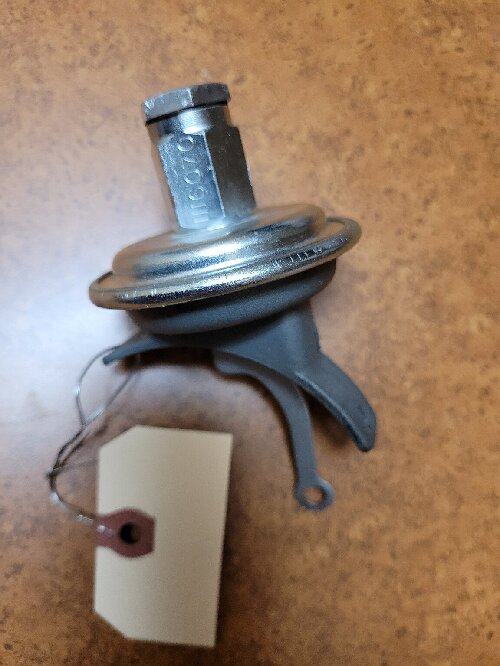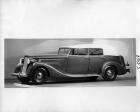|
Re: 1953 Delco Vacuum Advance
|
||||
|---|---|---|---|---|
|
Home away from home
|
53 Cavalier
There are only two possible configurations of shims for the vacuum chamber. First is the type that fits between the vacuum port fitting and the chambers housing. That would be somewhat like the oil drain plug gasket . . . quite visible once installed. Shimming the fitting further away from the housing will reduce spring preload and reduce the amount of vacuum to achieve both test points. There will also be a gasket to seal the chamber in this location, and the shims could be multiple gaskets. Second is the type that positions the shim between the spring and the fitting. This shim would not be visible once installed. Adding shim material in this location will increase the spring preload and increase the amount of vacuum to achieve both test points. The fitting gasket must also be retained when internal shimming. In both cases I’ve included a description of adding shims. If shims are removed the opposite affect occurs. If you think of a plot of applied vacuum versus arm position, shimming will translate the curve up/down or left to right. Shimming will not change the slope of the line. dp
Posted on: 2023/9/1 21:32
|
|||
|
||||
|
Re: 1953 Delco Vacuum Advance
|
||||
|---|---|---|---|---|
|
Home away from home
|
53 Cavalier
Your brother will love this question. I forgot to ask if the dark area on the high stop side of the tang is a wear pattern, or a shadow? I reason I ask is my lack of knowledge on cruise engine vacuum versus the vacuum when the chamber arm first touches the high stop. The test point suggest 11 inHg, so I’m thinking during cruise the chamber spends a lot of time with the arm on the high stop. Add to that a bit more tang/arm contact force if the cruise engine vacuum is more than the test point vacuum, and a bit of vibration if the distributor bushings are worn. All of that will contribute to fretting where the arm touches the tang. Wear in that location is in no way a big deal, but would be a confirmation that the chamber spends some amount of time on the high stop, and hence the importance of the arm geometry (number). dp
Posted on: 2023/9/1 22:07
|
|||
|
||||
|
Re: 1953 Delco Vacuum Advance
|
||||
|---|---|---|---|---|
|
Home away from home
|
DavidPackard
The shadow is black paint. The distributor must have been worked on in the past as it had a bad rebuild shop paint job.
Posted on: 2023/9/2 1:15
|
|||
|
||||
|
Re: 1953 Delco Vacuum Advance
|
||||
|---|---|---|---|---|
|
Home away from home
|
My rebuilt vacuum advance for my 53 Cavalier, it looks great!
Thank you Jason from Advanced Electrical Rebuilders! 
Posted on: 1/4 19:16
|
|||
|
||||
|
Re: 1953 Delco Vacuum Advance
|
||||
|---|---|---|---|---|
|
Home away from home
|
53 Cavalier . . . well done! I assume you still have the ‘215’ arm installed.
By the way, the operational description in ACDelco distributor patent US2187070 contains enough detail to conclude that both the high and low stops of the vacuum chamber are implemented by the geometry of the arm (‘operating member’ in Delco speak). The slot in the arm and its interference with the mounting bracket are the stops. There are no references to spring shims in the patent operational description. The subject patent is for the bracket made of sheet stock, but I suspect the cast bracket retained the same design intent. dp
Posted on: 1/4 22:04
|
|||
|
||||
|
Re: 1953 Delco Vacuum Advance
|
||||
|---|---|---|---|---|
|
Home away from home
|
Quote:
Yes, still have the original 215 arm. When my original vacuum advance is back on it should be functioning the way Packard engineers intended. I never really realized how much there is to a vacuum advance, and how important it is to use the correct one. And after being rebuilt it looks so good it will be like an ornament hanging on my distributor. 🙂
Posted on: 1/4 22:19
|
|||
|
||||








